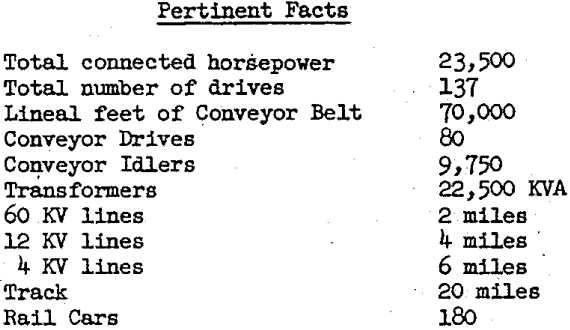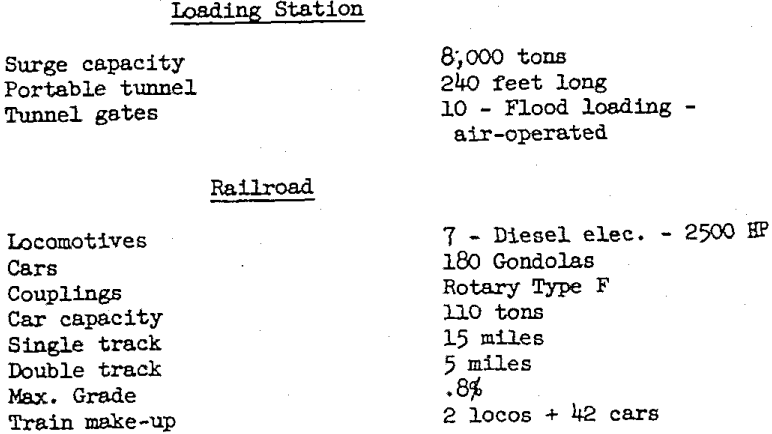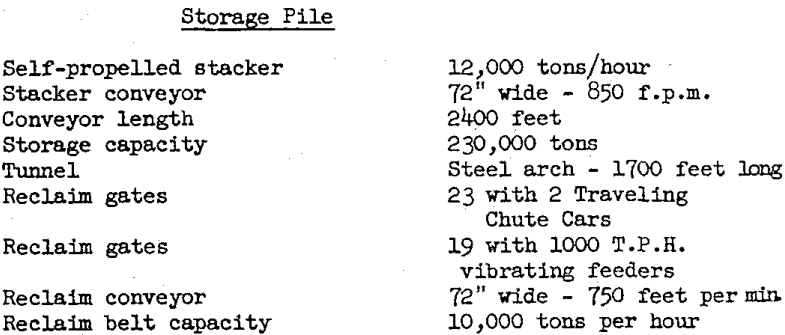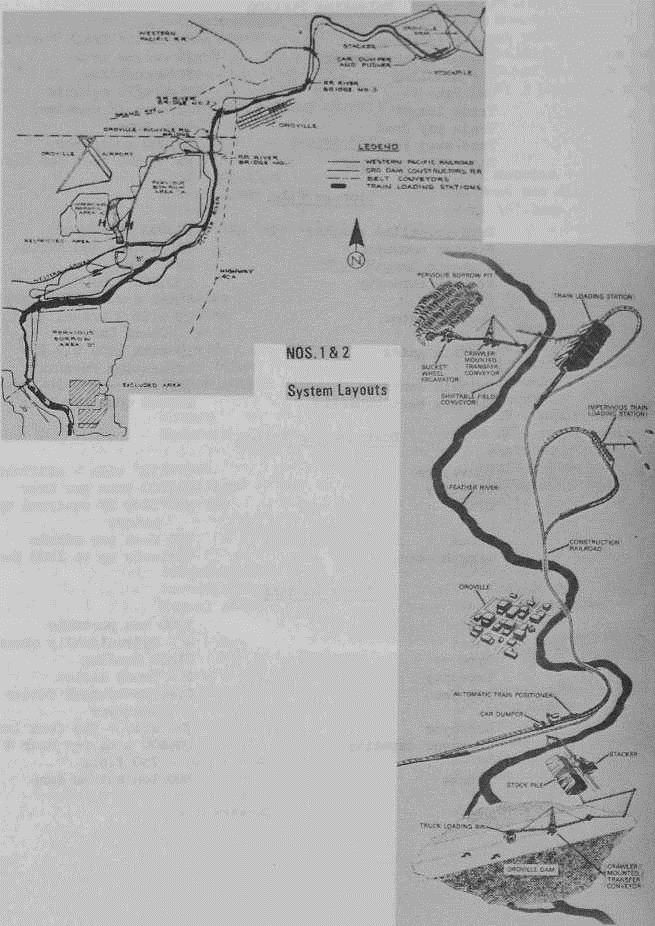Thus, 2½ years after completion, the engineering feat of Oroville Dam Construction still loans large. Let us take a close look at this project to see what made it unique. To begin with, it established a number of firsts:
- At 770 feet it was the highest earth fill dam in the world.
- At $121 million dollars, it was the largest ever United States construction project.(Civil).
- At 80 million cubic yards it had the largest earth volume of any dam in the world.
- The extensive use of belt conveyors for this application had never before been tried.
- The use of a high capacity bucket wheel excavator with shiftable belt conveyors had never before been utilized as a contractor’s tool.
- The principal of the “integral train” was applied most effectively whereby up to 220,000 tons of material was transported daily some 14 miles.
To achieve optimum economics a number of technical breakthroughs were necessary. The suppliers of major commercial components worked hand-in-hand with system engineers to develop new machinery necessary for the highly mobile characteristics of the systems, viz., single pulley drives delivering 2000 horsepower, 1000 horsepower right-angle shaft-mounted reducers, across the line starting of 1000 horsepower squirrel cage motors, 10 miles of steel chord conveyor belts with belt tensions up to 150,000 pounds, aircraft-type disc brakes, hydraulic take-ups, train loading at a rate of 25,000 tons per hour, automatic train indexing for rotary dumping at 10,000 tons per hour, roll-over car dumping without uncoupling cars, shifting 7500 ft. long conveyors up to 300 feet laterally without disassembly. These are some of the superlatives that have made the Oroville Dam project unique. The measure of its success is demonstrated by the results.
The project was completed days ahead of schedule after meeting every deadline date during the four-year program.
The joint venture team realized their anticipated profit margin.
The seven diesel electric locomotives were sold at about 80% of their first cost.
The 170-car train set, rotary dumper and train positioner were sold and are performing on another gargantuan long-term project in Australia.
The bucket wheel excavator and crawler-mounted transfer conveyor were sold and reconditioned and will see service in overburden stripping at a new coal mine to be opened this year in north-western United States.
We look forward to more extensive application of the many concepts pioneered at Oroville and to the development of even more massive and productive material handling systems on future projects.
The Oroville project is briefly described below and illustrated at the end of the article.
https://www.youtube.com/watch?v=u7j-JNOdKYQ
Sixty million yards of fill material located in a number of borrow pits some 14 miles from the dam site were recovered over a 3½-year period using a 3200 yd. per hour bucket wheel excavator working with a 265 foot long crawler-mounted transfer conveyor. These machines delivered up to 7000 tons per hour of cobble and sand to a 54″ wide shiftable pit conveyor extensible up to 7500 feet long. The reach of the two crawler-mounted machines produced a 280 foot wide by 7500 foot long swath in four passes before the conveyor required moving. The pit conveyor was of module construction end mounted on wooden ties which were joined by standard rail running the full length of the conveyor. The ties served as skids while the rail served as the attachment point for a roller assembly (much like a monorail trolley) attached to a side boom mounted on D-8 and D-9 dozers. Eight such dozers pulled the conveyor sidewise in 2-foot increments while travelling at full speed alongside the conveyor. No disassembly of the conveyor was required and the complete move and realignment was accomplished in approximately 18 hours. The 54″ steel chord belt delivered material at 850 feet per minute to a series of conveyors terminating at a train loading station.
The train loading station-consisted of an 8000 ton surge pile 240 feet long fed by an elevated shuttle conveyor supported on an “A” frame straddling the pile. A ground level tunnel constructed of timber and steel formed the passageway for the train. The tunnel roof was fitted with 10 air-operated flood loading gates permitting loading of 10 cars simultaneously. The 40-car train, pulled by two 2500 HP diesel electric locomotives, positioned the train under the chutes and flood loading the cars was accomplished by moving the train forward slowly until each car was filled with 110 tons of material. This cycle was repeated three additional times until 40 cars were filled with 4400 tons; all in 8 to 10 minutes. The tunnel which was designed to be portable, was moved to other locations during the life of the project.
After filling, the train made a 20-minute trip to the dumper some 12 miles away where dumping and train indexing were accomplished automatically after the two engines were automatically cut. The engines then picked up a waiting empty train and returned to the loading area. Three sets of engines worked with four train sets.
Train indexing was accomplished by means of a rope-operated pusher arm which engaged push pads on the car frames, positioning two cars per index into a tandem rotary dumper. Cars were rotated and dumped at a rate of 10,000 tons per hour and required no uncoupling since they were equipped with rotary couplers. As many as 56 trains of 40 cars each were dumped in one working day, delivering up to 240,000 tons of fill material.
Material from this point was uniformly fed to a 230,000 ton stockpile and withdrawn through a tunnel beneath the pile as required at the dam. A series of 72″ steel chord belt conveyors delivered 10,000 tons an hour of dam fill to a crawler-mounted transfer conveyor and then into a 1000 ton truck bin. From this point, bottom dump Athey wagons were used to deliver and spread the material on the dam. The dam conveyors and truck bin were relocated frequently as the dam elevation rose to provide an optimum truck operation relative to grades and distance.














